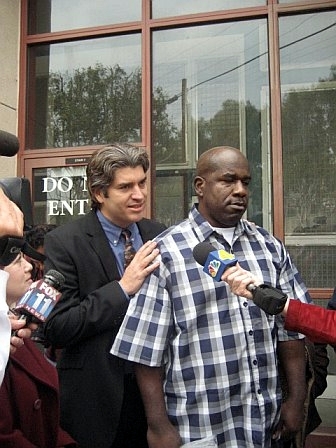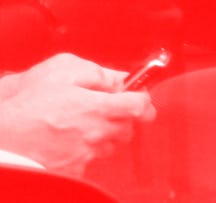Being deceived isn’t always a case of believing a lie told to us by someone else. Experiments have shown many of us can come to see our own fictions as truth – as in the famous case of the fake 9/11 survivor.
When self-deception becomes global hoax
Words by A R Hopwoodaverage reading time 7 minutes
- Serial

Tania Head was everything that the World Trade Center Survivors’ Network needed as a public face for the cause: she survived the 9/11 attack, she was compassionate, hard-working and likeable. She also seemed scrupulously honest and generous – she never accepted any money for her campaigning work and donated considerable sums to the group. She also understood the power of public engagement, so she invited the filmmaker Angelo Guglielmo to make a documentary about the survivors connected to the charity. What happened next was unexpected and deeply troubling.
In 2007, the New York Times contacted the network, looking for an inspiring profile to lead on its sixth anniversary coverage, and they had no hesitation in recommending Head – she was the obvious choice. As the normal background checks were being made for the article, something didn’t stack up. Head had claimed to be working for Merrill Lynch when the attacks took place, but the company wasn’t based in the buildings at the time. She’d also claimed to be a graduate of both Stanford and Harvard, but neither institution had heard of her.
Was it just a case of an embellished CV, or were all of Head’s claims now suspect? As the NYT and Guglielmo dug further, it became astonishingly clear that Tania Head was not a survivor of 9/11. She’d made the whole thing up – including her story about the day of the attack, in which she attributed a pre-existing burn on her arm to an injury sustained during her escape.
The woman who wasn’t there
Tania Head is in fact Alicia Esteve Head from Spain. On 11 September 2001 she was nowhere near New York and reportedly attending a class for her master’s degree at ESADE, an educational institution in Barcelona.
Guglielmo’s film soon shifted gear from a portrayal of genuine trauma into one that tracked the slow reveal of Head’s deception, but it was a task he undertook with a heavy heart. Like many others, Guglielmo had grown fond of her, and he had genuinely admired her work for the network.
In 2008 it was reported via a mysterious email that Head had committed suicide. However, she was spotted again in New York in 2011 with her mother. In 2012 she was reported in the Spanish press as having lost her job at an insurance firm in light of the publicity surrounding the revelation of her ruse – Guglielmo’s documentary ‘The Woman Who Wasn’t There' came out that year. Her whereabouts are currently unknown.
Like a method actor who lost track of their original self, did she start to believe the lies she was telling about her new heroic persona?
Was Head simply telling lies, or can her bizarre fraud be attributed to a pathological form of self-deception, which should actually provoke a sympathetic response? There are many psychological disorders listed in the Diagnostic and Statistical Manual (DSM) – the ‘psychiatrist’s bible’ – that perhaps point towards a definition of such a condition.
When experiencing a delusional disorder, patients struggle to tell what is real or imagined. In a histrionic personality disorder, sufferers are characterised by patterns of attention-seeking behaviours that result from an excessive need for approval. And then there is the controversial condition of pathological lying, referred to diagnostically as pseudologia fantastica, where a person tells incessant lies that are mostly aimed at inflating their own importance.
However, there is no consensus on the condition, since there are conflicting ideas about whether such behaviour is wilful or automatic (and thus unintentional).
I’m not a psychiatrist, so I should probably stop there in my amateurish attempts to diagnose a serious case. All the same, it seems to me that there is more to such extreme deceptive behaviour than meets the eye.
After all, we all tell lies from time to time, so was Head’s alternative life narrative just an exaggerated version of what we all do? Like a method actor who lost track of their original self, did she start to believe the lies she was telling about her new heroic self? And if so, what does such an extreme case tell us about our own tendencies to self-deceive?
False confessions and forced fabrications
In a 2018 study by the psychologist Laura Paige, 42 experimental participants filled out a questionnaire about what they were doing the day before; however, on half the questions they were told to tell a lie. Forty-five minutes later they had to fill out the same form again, but this time only give true answers to the questions. After being questioned at a later stage, some came to believe that the original lies were in fact truths – particularly participants in the older age bracket of 60 to 92.
Data derived from the respondents’ brains’ electrical activity also illustrated that the act of lying engaged the parts of the brain responsible for working memory – it was as if the original lies had infected the ‘truthful’ recollections, thus resulting in the innocent confusion later in the experiment.
When it comes to more substantial lies involving whole events, it seems the same applies. In a landmark 2008 study into forced fabrication by Quin Chobrak and Maria Zaragoza, participants were asked to invent entire accounts of fictitious events in their lives, including experiences with people, locations and events they’d never seen.
Their initial response was resistance – participants felt uncomfortable about creating such reports, but from within the ethical confines of the psychology lab they were ‘forced’ to do it. A week later those involved were still able to clearly identify their invented fake story against true accounts.
After eight weeks the response was markedly different. Nearly 50 per cent of those who took part freely reported their forced fabrications as real, even if they had refuted them at the earlier week-one test. The original source of the information in the form of a lie had become lost in the minds of the participants.

Lawyer Justin Brooks with an Innocence Project client, Tim Atkins, outside a courthouse.
Such an automatic propensity to believe knowingly false information has major implications in a legal setting. Police interviewers have often used false stories to trigger an association, or used misinformation that will confuse a suspect. After lengthy interrogations, what is recognised as ‘truthful’ becomes blurred and can on occasion lead to false confessions. The Innocence Project has worked tirelessly to exonerate those who have falsely confessed under such conditions and forensic psychologists now train police in interview techniques that negate such risks, by referencing deceptive experiments like those described above.
If original known lies can unconsciously become truths then there are obviously potential consequences in our private and public lives. The example of Tania Head could be seen as a more extreme playing-out of such a phenomenon, if indeed there was an original point when she recognised her lies for what they were.
The implications for the political realm are also stark – what seem like obvious lies to some of the electorate might feel like hard truths to the politician and their supporters.
What such studies teach us is that under certain conditions a significant percentage of the population can come to believe ‘as true’ false information that they have originally created. It’s tempting, then, to conclude that such a cognitive flaw can only ever be used for harm and that we should very simply always endeavour to just tell the truth. But is there something in our ability to unknowingly self-deceive that can actually be used positively?
In the final part of this series, I’ll be asking whether it could be ethically justifiable to use our tendency to be deceived by others and by ourselves, in a clinical setting to improve our health.
About the author
A R Hopwood
A R Hopwood is an artist and Wellcome Trust Engagement Fellow. He has collaborated extensively with psychologists to create art projects about memory, belief and misdirection, including WITH (withyou.co.uk) and the False Memory Archive. He was co-curator of ‘Smoke and Mirrors: The Psychology of Magic’ at Wellcome Collection in 2019.
